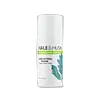What's inside
What's inside
 Key Ingredients
Key Ingredients

 Benefits
Benefits

 Concerns
Concerns

No concerns
 Ingredients Side-by-side
Ingredients Side-by-side

Aloe Barbadensis Leaf Juice
Skin ConditioningWater
Skin ConditioningNiacinamide
SmoothingGlycerin
HumectantCyclodextrin
AbsorbentAlbizia Julibrissin Bark Extract
MaskingPentylene Glycol
Skin ConditioningGluconolactone
Skin ConditioningRetinal
Skin ConditioningGlobularia Cordifolia Callus Culture Extract
Skin ConditioningCarnosine
Skin ConditioningCarnitine
CleansingRubus Chamaemorus Seed Oil
Skin ConditioningHelianthus Annuus Seed Oil
EmollientBisabolol
MaskingTocopherol
AntioxidantTocotrienols
Skin ConditioningElaeis Guineensis Oil
EmollientLonicera Japonica Flower Extract
Skin ConditioningLonicera Caprifolium Flower Extract
PerfumingPolysorbate 20
EmulsifyingXanthan Gum
EmulsifyingSodium Benzoate
MaskingAloe Barbadensis Leaf Juice, Water, Niacinamide, Glycerin, Cyclodextrin, Albizia Julibrissin Bark Extract, Pentylene Glycol, Gluconolactone, Retinal, Globularia Cordifolia Callus Culture Extract, Carnosine, Carnitine, Rubus Chamaemorus Seed Oil, Helianthus Annuus Seed Oil, Bisabolol, Tocopherol, Tocotrienols, Elaeis Guineensis Oil, Lonicera Japonica Flower Extract, Lonicera Caprifolium Flower Extract, Polysorbate 20, Xanthan Gum, Sodium Benzoate
 Reviews
Reviews

Ingredients Explained
These ingredients are found in both products.
Ingredients higher up in an ingredient list are typically present in a larger amount.
Glycerin is already naturally found in your skin. It helps moisturize and protect your skin.
A study from 2016 found glycerin to be more effective as a humectant than AHAs and hyaluronic acid.
As a humectant, it helps the skin stay hydrated by pulling moisture to your skin. The low molecular weight of glycerin allows it to pull moisture into the deeper layers of your skin.
Hydrated skin improves your skin barrier; Your skin barrier helps protect against irritants and bacteria.
Glycerin has also been found to have antimicrobial and antiviral properties. Due to these properties, glycerin is often used in wound and burn treatments.
In cosmetics, glycerin is usually derived from plants such as soybean or palm. However, it can also be sourced from animals, such as tallow or animal fat.
This ingredient is organic, colorless, odorless, and non-toxic.
Glycerin is the name for this ingredient in American English. British English uses Glycerol/Glycerine.
Learn more about GlycerinPentylene glycol is typically used within a product to thicken it. It also adds a smooth, soft, and moisturizing feel to the product. It is naturally found in plants such as sugar beets.
The hydrophilic trait of Pentylene Glycol makes it a humectant. As a humectant, Pentylene Glycol helps draw moisture from the air to your skin. This can help keep your skin hydrated.
This property also makes Pentylene Glycol a great texture enhancer. It can also help thicken or stabilize a product.
Pentylene Glycol also acts as a mild preservative and helps to keep a product microbe-free.
Some people may experience mild eye and skin irritation from Pentylene Glycol. We always recommend speaking with a professional about using this ingredient in your routine.
Pentylene Glycol has a low molecular weight and is part of the 1,2-glycol family.
Learn more about Pentylene GlycolWater. It's the most common cosmetic ingredient of all. You'll usually see it at the top of ingredient lists, meaning that it makes up the largest part of the product.
So why is it so popular? Water most often acts as a solvent - this means that it helps dissolve other ingredients into the formulation.
You'll also recognize water as that liquid we all need to stay alive. If you see this, drink a glass of water. Stay hydrated!
Learn more about WaterXanthan gum is used as a stabilizer and thickener within cosmetic products. It helps give products a sticky, thick feeling - preventing them from being too runny.
On the technical side of things, xanthan gum is a polysaccharide - a combination consisting of multiple sugar molecules bonded together.
Xanthan gum is a pretty common and great ingredient. It is a natural, non-toxic, non-irritating ingredient that is also commonly used in food products.
Learn more about Xanthan Gum